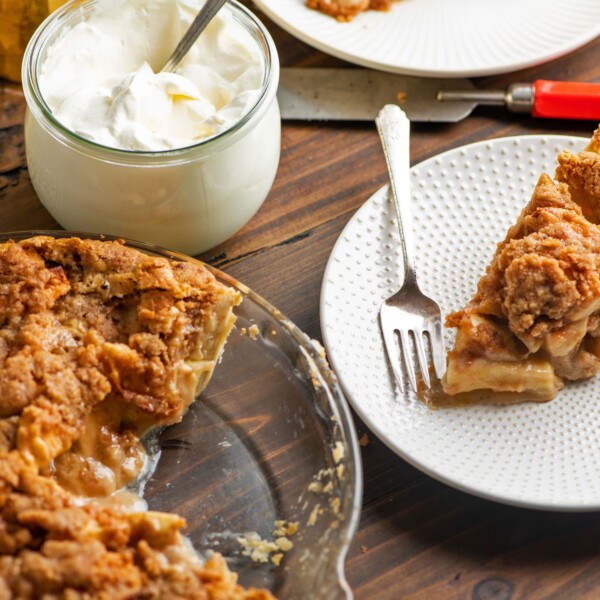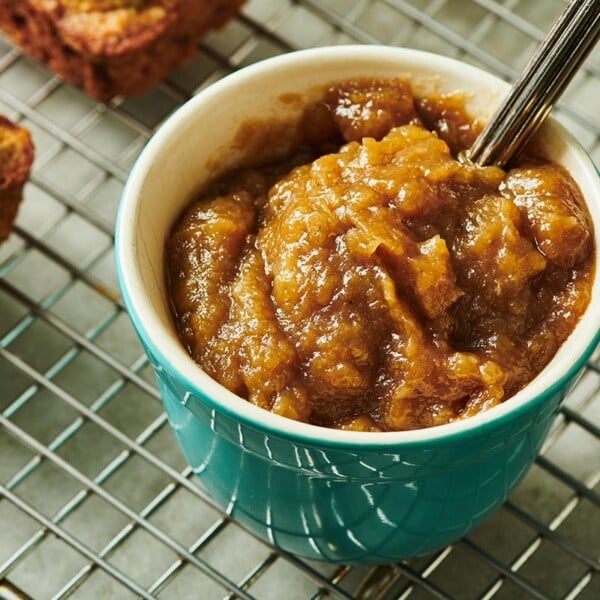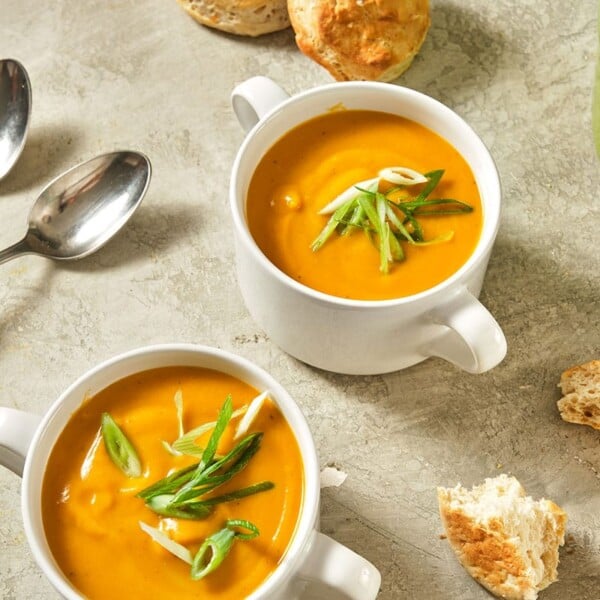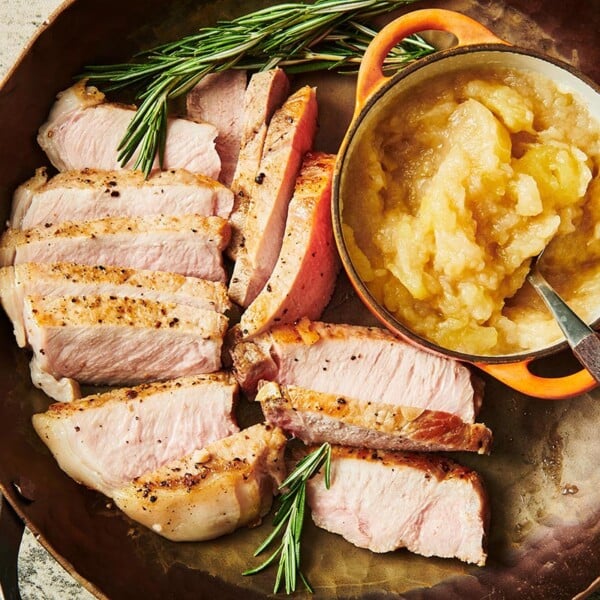Homemade Applesauce
on Sep 09, 2022, Updated Dec 14, 2023
This post may contain affiliate links. Please read our disclosure policy.
Smooth or chunky — your choice — homemade applesauce is so easy to make and your kitchen will smell amazing!
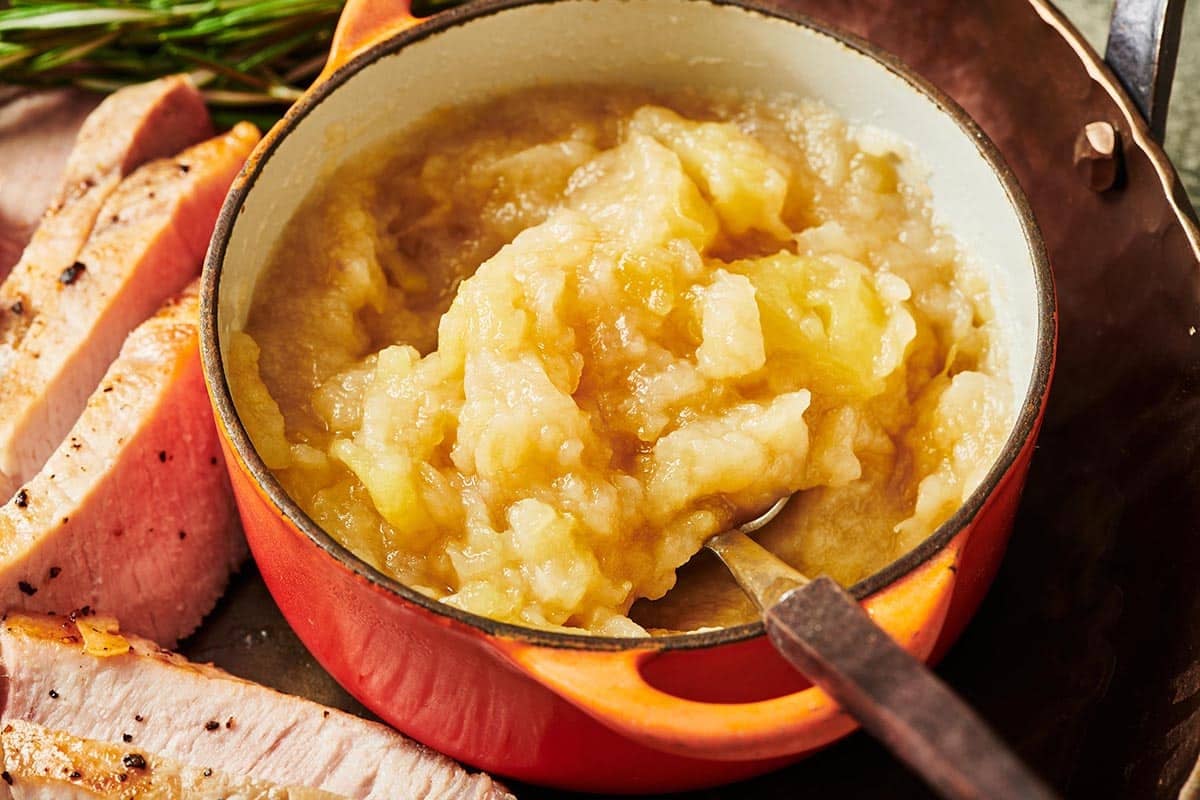
In the fall, when you get a good haul of apples, it’s time to make applesauce! The great news is that you can use pretty much whatever apples you buy or pick and that apples that are a bit dinged or bruised or past their crisp prime can be put to excellent use in this applesauce recipe. And then you can enjoy it on its own or pair it with pork chops, potato pancakes (latkes), or blintzes for a match made in apple tree heaven.
Slow-cooked apples practically melt into a sauce, becoming even smoother with a run through a food mill. If you don’t have a food mill or prefer your applesauce chunky, you can simply keep mashing the apples against the side of the pot as you cook them down. There will likely still be little bits of small apple chunks in the sauce. Chunky applesauce is some people’s jam (no pun intended), so decide for yourself!
Table of Contents
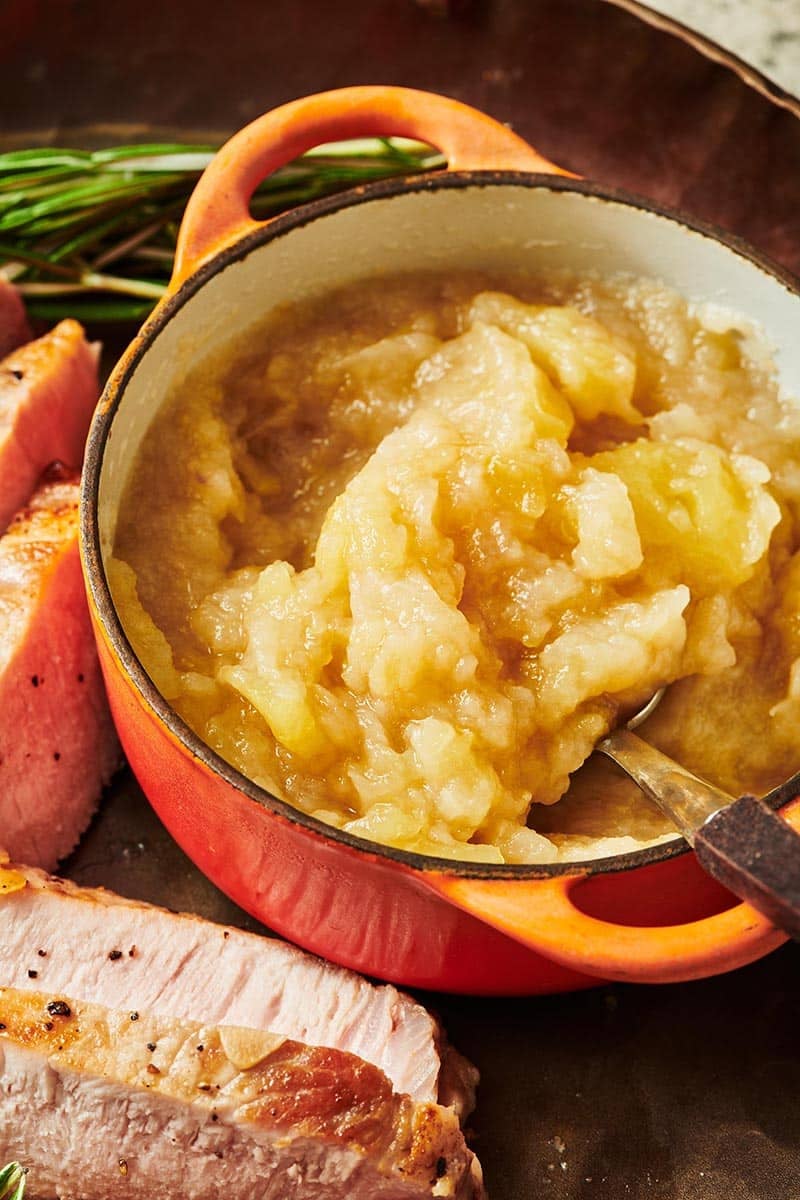
FAQs
Essentially you slow-cook apples until they are very soft. Then, puree them by mashing them or running them through a food mill or a ricer using the disk with larger holes inserted until they are smooth in consistency. You could also use a blender. How smooth depends on the tool you use.
I think the food mill is the best tool, allowing you to puree a larger amount of apples once and get to a fairly smooth texture.
The lemon juice balances out the sweetness of the apples and the sugar with a bit of tartness. The acidity of the citrus also helps preserve and lock in the color of the apples.
The cinnamon is optional, and some people love it, and others like the purity of the taste of apples without added spice. I think a hint of cinnamon is the perfect amount, but you can raise the amount to 1 teaspoon or omit it altogether.
It’s mostly about the consistency and a little bit about the sweetness. Apple butter is often sweeter and cooked for longer to reduce down to a thicker consistency. Applesauce is looser and usually a bit less sweet, and often less spiked with warm spices than apple butter, which tends to be a bit more intense in flavor.
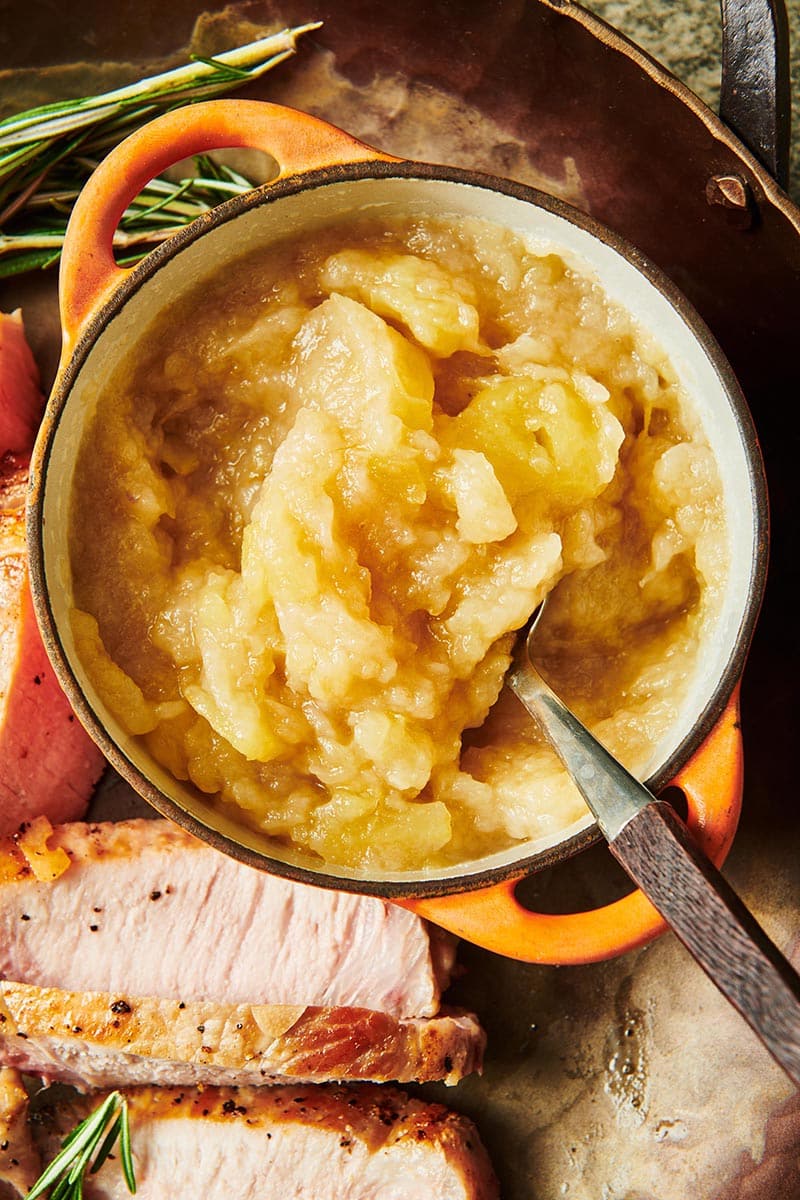
Variations
Unsweetened Applesauce
If you want to skip the sugar altogether, you will have a very soft, natural-tasting applesauce. Sometimes this is desirable when you are serving it with savory food, like pork chops, or if you are looking to cut back on added sugar in your diet.
Applesauce with Cinnamon Candies
This is a very old-school addition, but for many years many cooks added a few tablespoons of those tiny cinnamon candies (sometimes round, sometimes heart-shaped, perhaps called Cinnamon Imperials) to their applesauce. These candies provide sweetness and cinnamon spiciness. You can add them if you like — they also add a notable pinkish hue to the sauce, no matter what kind of apples you chose.
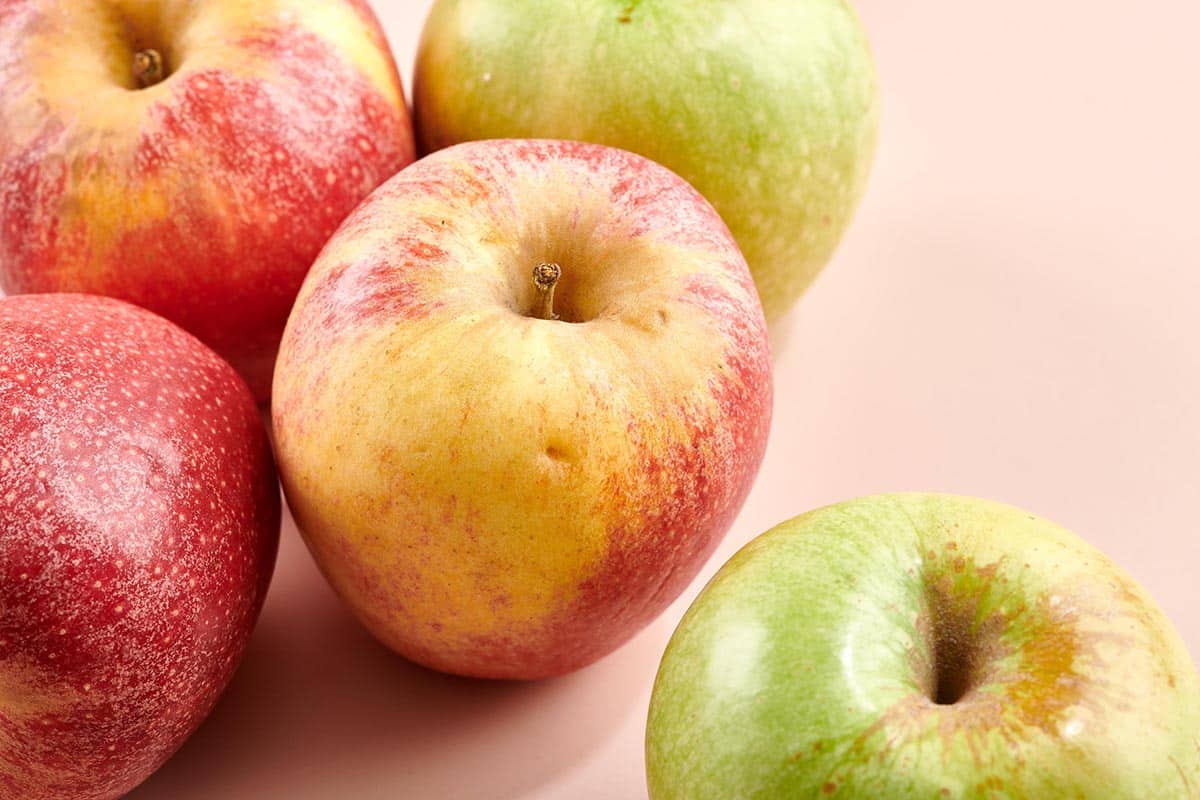
Best Apples for Applesauce
Any apples can be made into applesauce, but firmer apples will take longer to reach a fall-apart consistency. It’s also worth noting that apples that may have passed their best-eating moment and that are a little bit soft will make excellent applesauce.
Some apples are quite sweet, some are fairly tart, and all of the varieties have different flavors. All of this means that the ½ cup sugar is a starting point. If your apples are very sweet, and you don’t like your applesauce too sweet, add a bit less sugar and see if you want to add more once it’s dissolved into the sauce. Conversely, if you are using tart apples or just love sweet applesauce, then add more sugar.
Some good apple varieties to consider:
- Fuji
- Gala
- Honeycrisp
- Golden Delicious
- McIntosh
- Macouns
- Cortland
- Gravenstein
- Braeburn
- Pink Lady
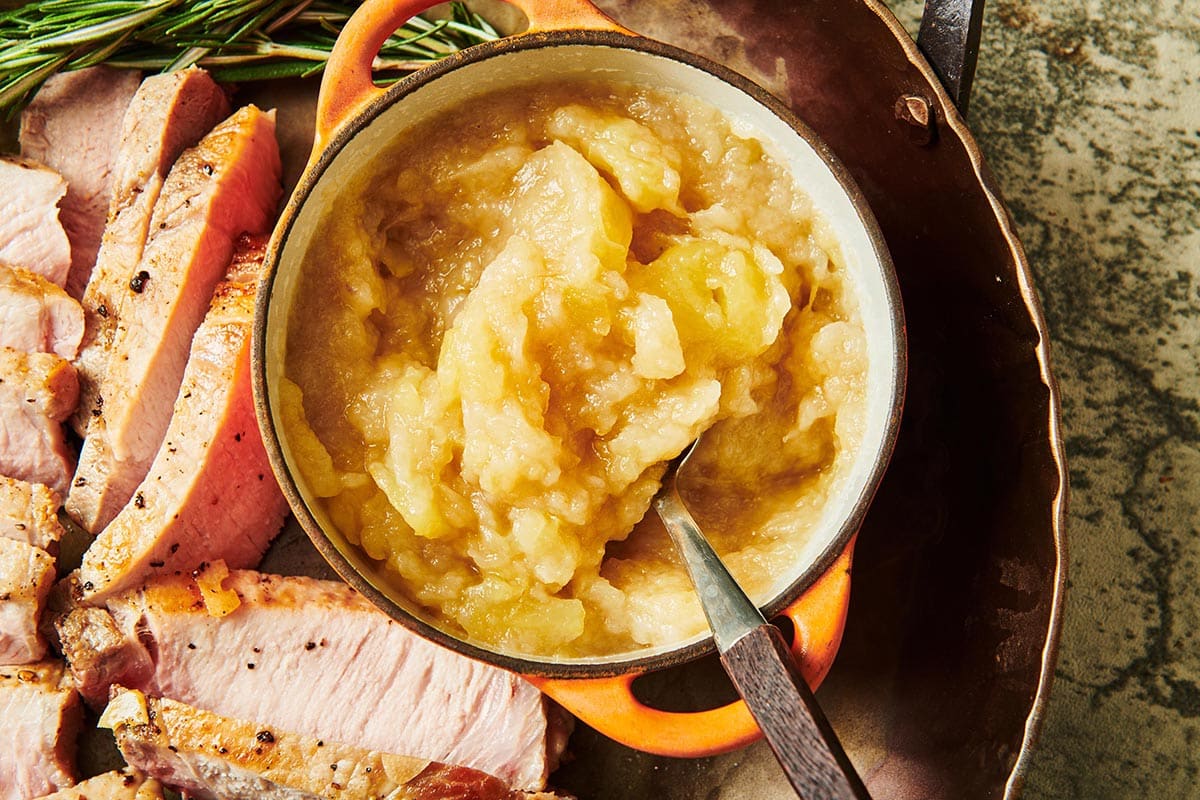
How to Make Applesauce
- Peel and core the apples: Cut them into chunks.
- Cook the apples: Bring the apples to a simmer in a pot over medium-high heat. Reduce the heat, cover the pan, and simmer the apples until they are very tender and starting to fall apart, about 20 minutes. Stir frequently. Add the sugar, lemon juice, and cinnamon.
- Mash the apples: Either mash the cooked apples with a wooden spoon against the side of the pot until the mixture is fairly smooth with little chunks of apple, or run the applesauce through a food mill or ricer.
- Adjust the sweetness: Taste and adjust the amount of cinnamon and sugar as desired.
- Cool: Transfer to clean dry glass jars, seal, and refrigerate.
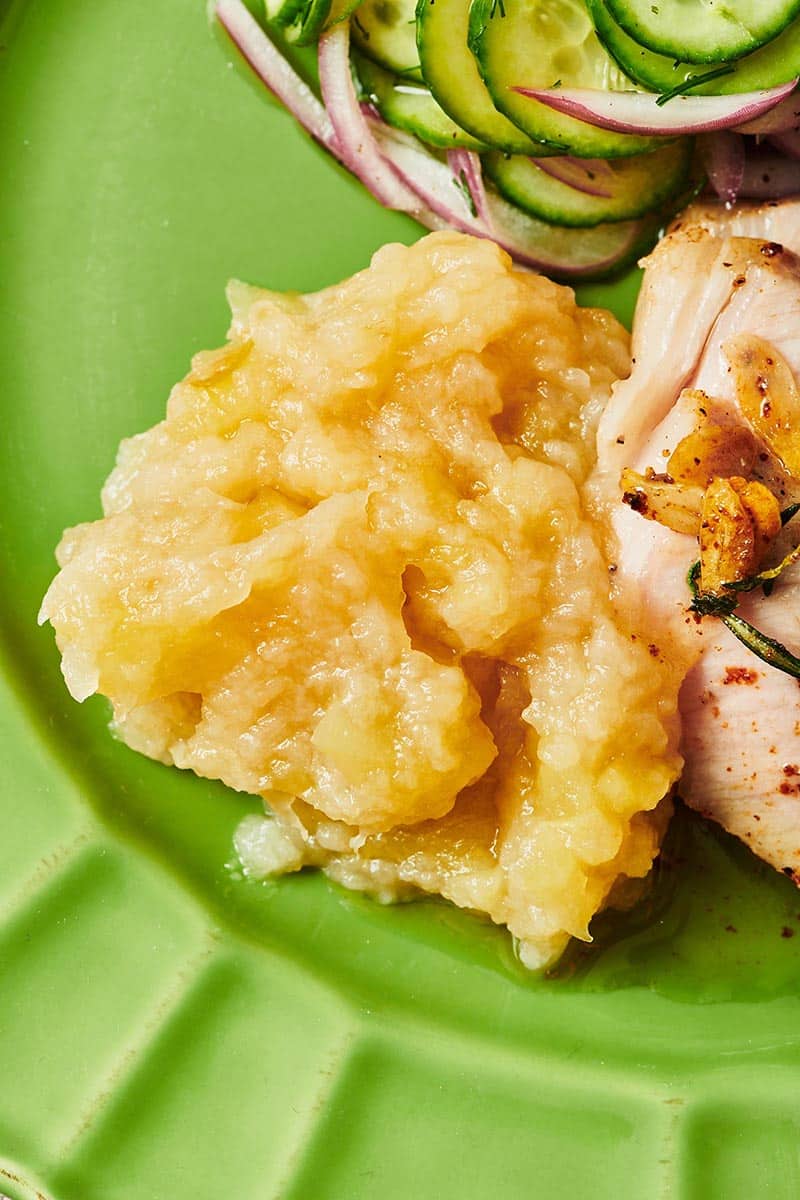
Storage
Applesauce will last in clean, sealed jars for up to 3 weeks in the refrigerator.
How to Freeze Applesauce
Applesauce can also be frozen; place the applesauce in a freezer-proof container and freeze for up to 1 year.
When you are freezing applesauce, or any food item for that matter, especially one that is some form of liquid, make sure there is just a little room for the sauce to expand when it freezes without opening the container.
What to Serve With Applesauce
You can top a bowl of applesauce with nuts, dried fruit, granola, or muesli. Applesauce is a favorite pairing for pork dishes of all kinds, like pork chops or a pork roast. It is often served with potato pancakes, especially during the Jewish holidays. It’s also great with blintzes.
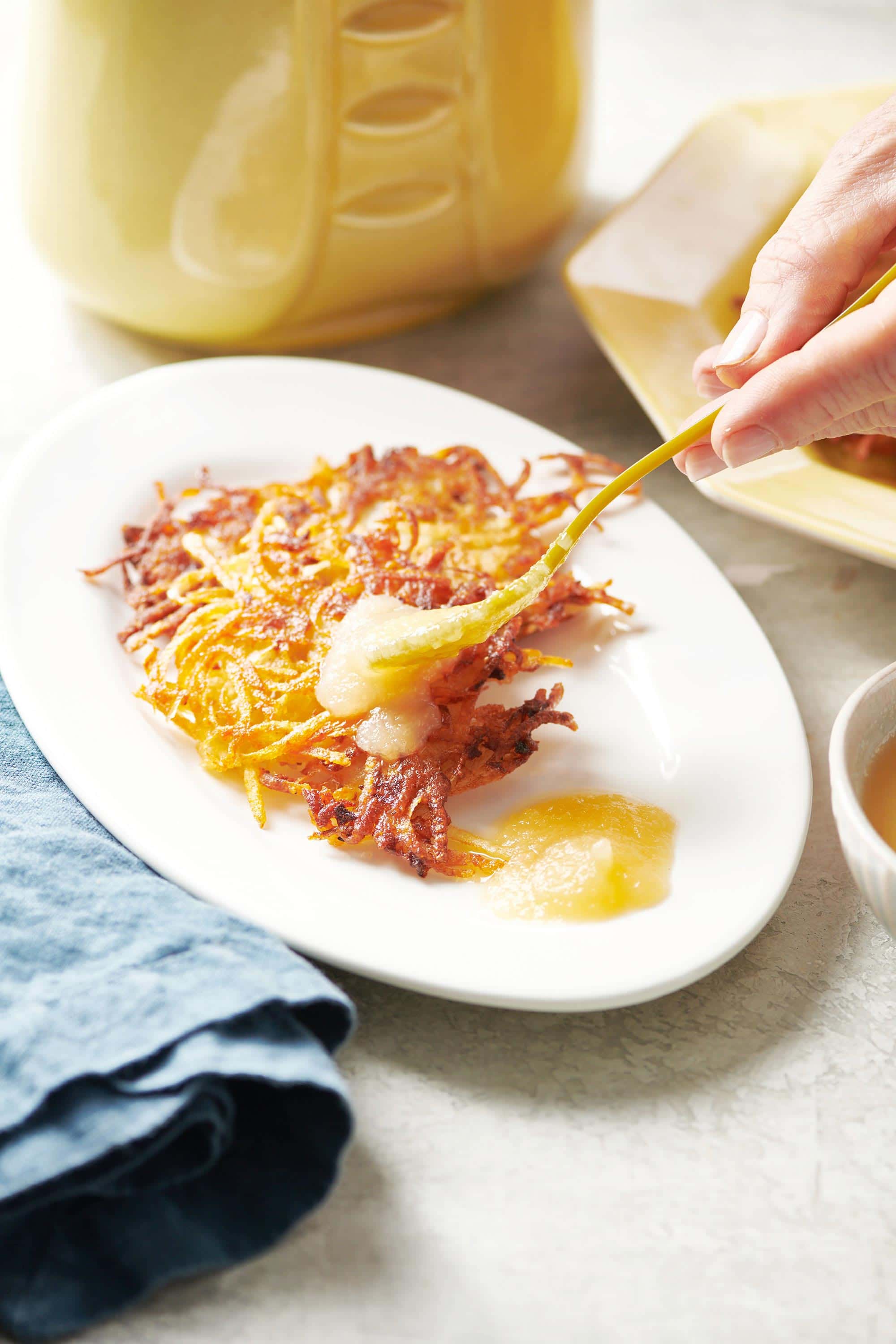
More Apple Recipes
- Homemade Apple Butter
- Apple Coffee Cake
- Best Apple Streusel Pie
- Caramel Apples
- Brown Butter Apple Streusel Muffins
Pin this now to find it later
Pin It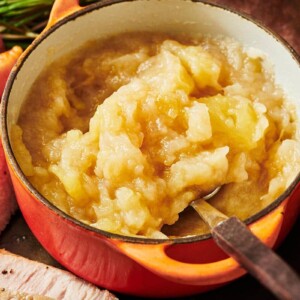
Homemade Applesauce
Ingredients
- 2 pounds apples (see Note)
- ⅔ cup water
- ½ cup sugar
- 1 teaspoon fresh lemon juice
- ¼ teaspoon ground cinnamon
Instructions
- Peel the apples, then quarter and core them.
- Place the apples with the water in a large, heavy pot. Bring the apples to a simmer over medium-high heat. Reduce the heat, cover the pan, and simmer the apples until they are very tender and starting to fall apart, about 20 minutes (some apples will take longer than others). Stir the apples frequently as they cook to prevent sticking and burning. Add the sugar and stir until dissolved. Add the lemon juice and cinnamon, and stir to combine well.
- You can either mash the cooked apples with a wooden spoon against the side of the pot until the mixture is fairly smooth with little chunks of apple, or run the applesauce through a food mill or ricer, which will make it smooth. Taste and adjust the amount of cinnamon and sugar as desired.
- Allow to cool to room temperature and transfer to clean dry glass jars.
- Seal the jars and refrigerate for up to 3 weeks.
Notes
- Unsweetened Applesauce: If you want to skip the sugar altogether, you will have a very soft, natural-tasting applesauce. Sometimes this is desirable when you are serving it with savory food, like pork chops, or if you are looking to cut back on added sugar in your diet.
- Applesauce with Cinnamon Candies: This is a very old-school addition, but for many years many cooks added a few tablespoons of those tiny cinnamon candies (sometimes round, sometimes heart-shaped, perhaps called Cinnamon Imperials) to their applesauce. These candies provide sweetness and cinnamon spiciness. You can add them if you like — they also add a notable pinkish hue to the sauce, no matter what kind of apples you choose.
